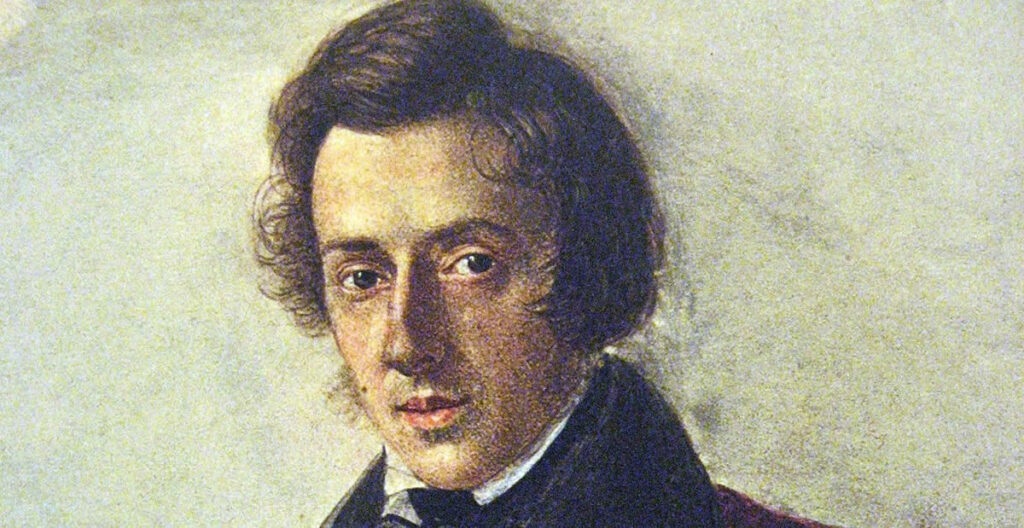Frédéric Chopin’s Ballades stand among the most celebrated and influential solo piano compositions of the Romantic era. Composed between 1831 and 1842, these four works—Ballade No. 1 in G minor, Op. 23; Ballade No. 2 in F major, Op. 38; Ballade No. 3 in A-flat major, Op. 47; and Ballade No. 4 in F minor, Op. 52—redefine the expressive and technical possibilities of the piano.
Origins and Inspiration
Chopin’s Ballades are thought to have been inspired by the poetic works of Adam Mickiewicz, a fellow Polish expatriate and a prominent figure in Polish Romantic literature. While no definitive programmatic links exist, Mickiewicz’s narrative poetry, rich with themes of heroism, nostalgia, and national identity, seems to resonate in the sweeping drama and lyricism of the Ballades.
Chopin began composing the first Ballade around 1831, during his early years in Paris, having left his homeland in the wake of the November Uprising (1830–1831). His nostalgia for Poland and its struggles deeply influenced his music, infusing the Ballades with an intense emotional depth and dramatic contrast.
The Four Ballades: An Overview
Ballade No. 1 in G minor, Op. 23 (1831–1835)
Composed between 1831 and 1835 and published in 1836, the G minor Ballade is one of Chopin’s most powerful and recognizable works. The piece opens with a haunting introduction, followed by a lyrical theme that undergoes a series of dramatic transformations. It culminates in a fiery coda that challenges even the most skilled pianists. The work’s structure is both narrative and innovative, reflecting Chopin’s deepening musical maturity.
Ballade No. 2 in F major, Op. 38 (1836–1839)
Dedicated to Robert Schumann, the second Ballade is noted for its stark contrasts. The serene opening theme in F major gives way to a tempestuous Presto con fuoco section in A minor, creating a striking duality of mood. This juxtaposition has led to interpretations linking the work to national struggles or personal turmoil in Chopin’s life, particularly his deteriorating health and complex relationship with George Sand.
Ballade No. 3 in A-flat major, Op. 47 (1840–1841)
The third Ballade, composed in the early 1840s, features a more fluid and song-like quality. It is often described as the most lyrical of the four, though it retains Chopin’s characteristic harmonic complexity and dramatic shifts. The piece builds toward a brilliant coda, showcasing Chopin’s mastery of melodic development and pianistic virtuosity.
Ballade No. 4 in F minor, Op. 52 (1842)
Considered by many to be Chopin’s greatest work for solo piano, the fourth Ballade is a masterpiece of thematic transformation and structural sophistication. Its intricate interplay of motifs and climactic development lead to a breathtaking conclusion. This Ballade, composed during a period of both artistic triumph and personal hardship, epitomizes Chopin’s ability to merge poetic expression with technical brilliance.
Legacy and Influence
Chopin’s Ballades had a profound impact on later composers, inspiring figures such as Franz Liszt, Johannes Brahms, and Claude Debussy. Their fusion of lyrical narrative and complex structure set new standards for solo piano composition, influencing generations of musicians.
Today, the Ballades remain staples of the concert repertoire, performed by the world’s greatest pianists and cherished for their unparalleled emotional depth and technical artistry. They continue to captivate audiences with their blend of poetic beauty, dramatic intensity, and Chopin’s unmistakable musical voice.
Whether viewed as reflections of Polish nationalism, personal struggles, or pure Romantic expression, Chopin’s Ballades stand as timeless masterpieces that bridge the realms of poetry and music.


No responses yet